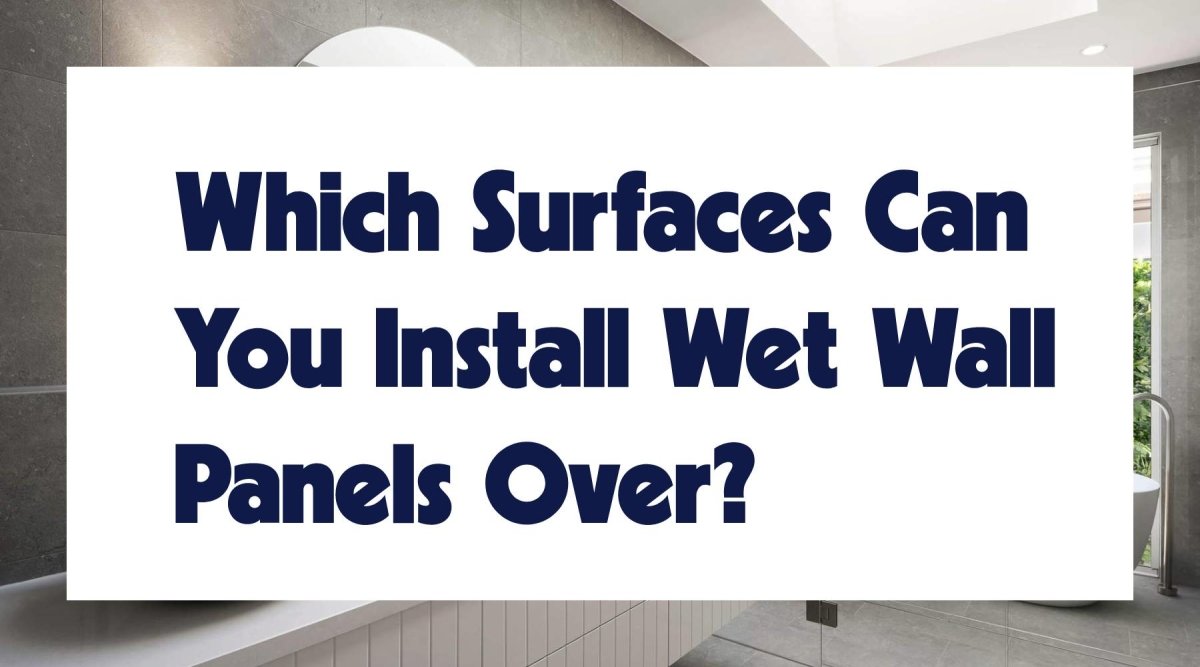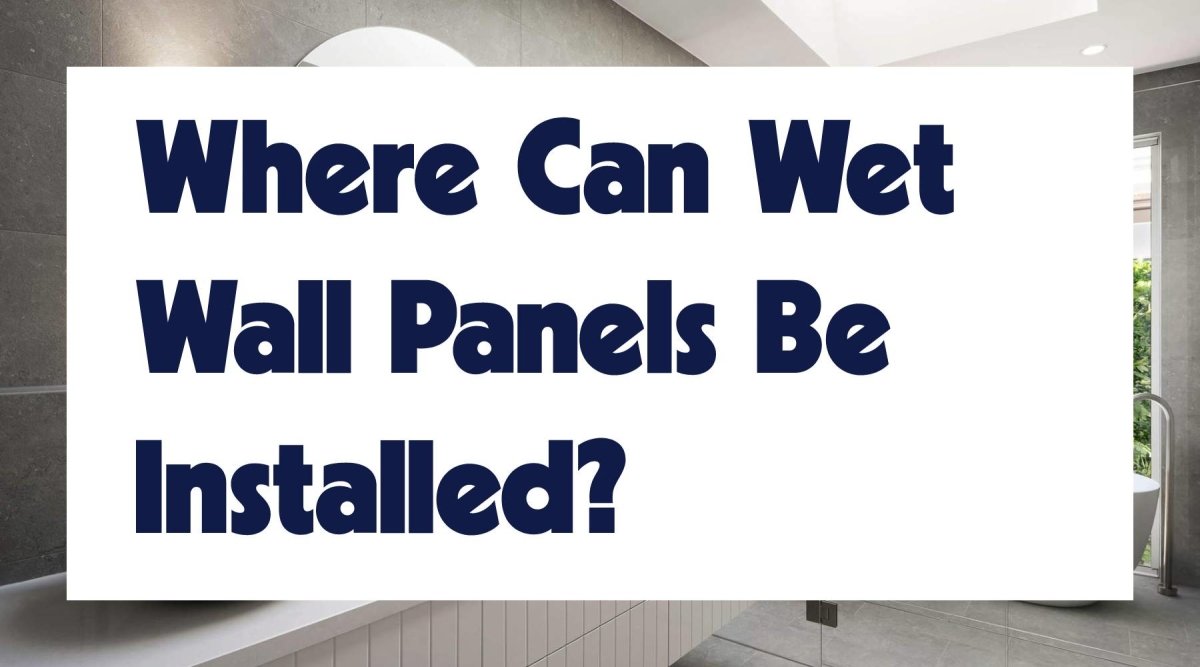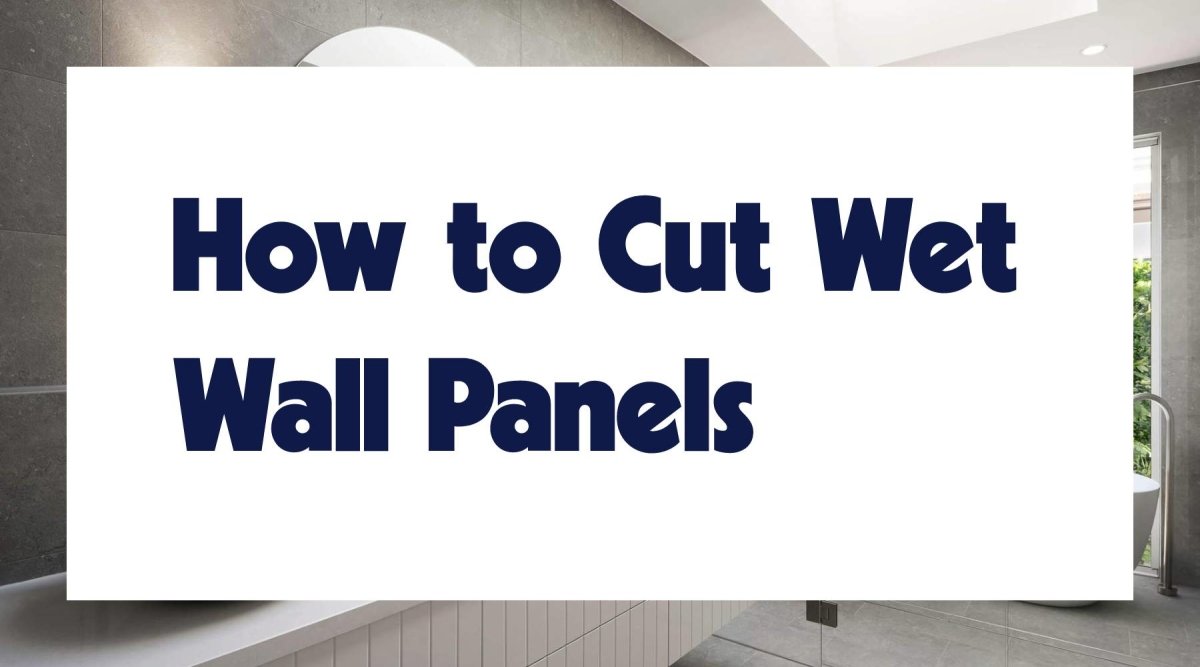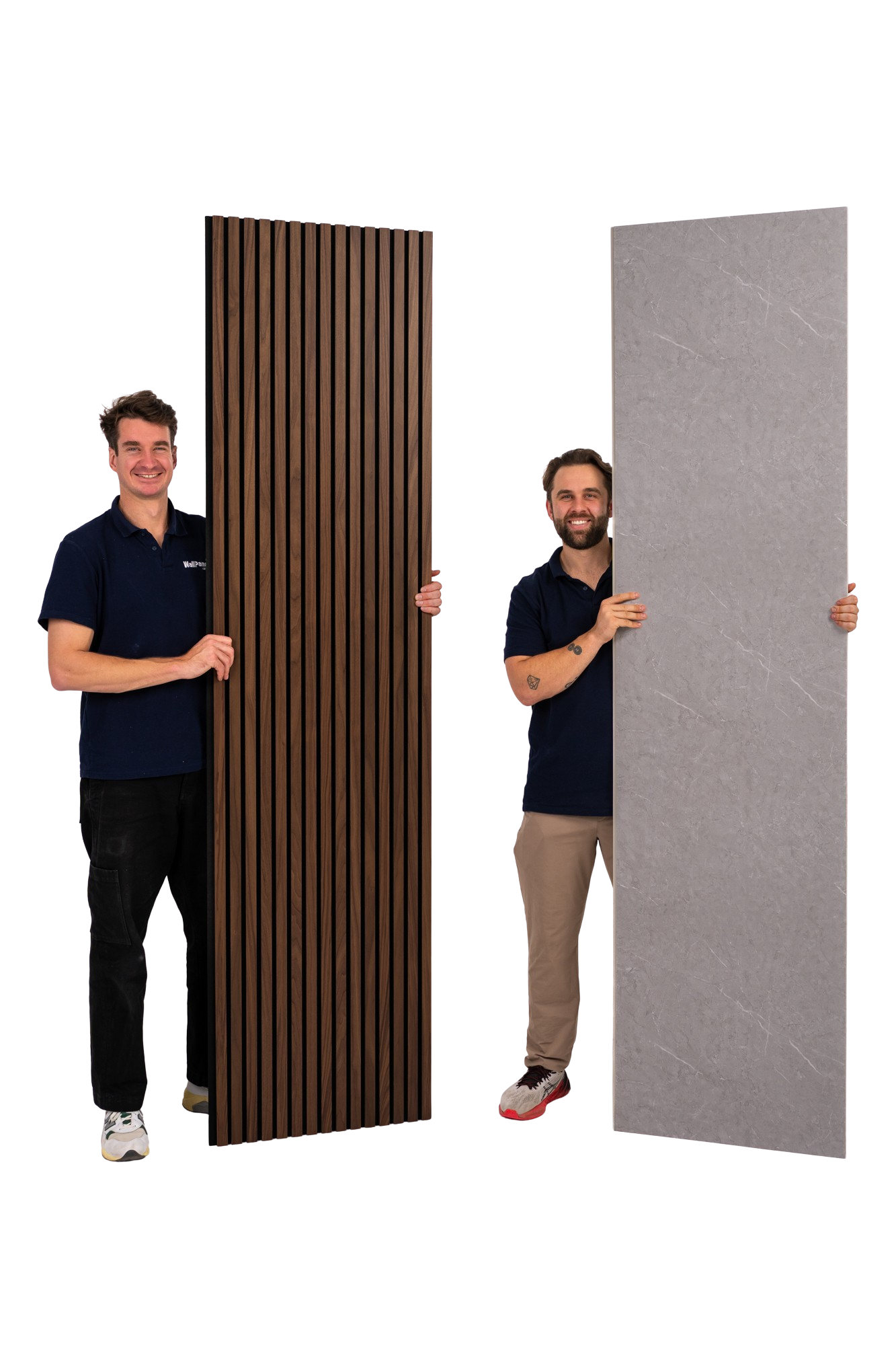Wet wall panels are an easy, affordable way to get high-end aesthetics in your bathroom. They’re also 100% waterproof, making them perfect for damp areas like bath and shower rooms (or pretty much any room).
We will cover some more common surfaces in this article, but know that you can install wet wall panels over most surfaces so long as they're sound and level. That includes tiles, drywall/plasterboard, timber, plywood sheeting, concrete and more.
If your walls aren't level you can re-plaster or have a batten frame built to attach the panels to. This does add to the renovation cost but it can be done!
Here are a few of the most common surfaces we see:

Tiles
Tiles are the traditional choice for bathrooms, but they are costly and time-consuming to install. Grouting is also highly porous and quickly houses mildew and mould. PVC panels can be installed over the top of tiles, creating a waterproof barrier that prevents mould. Ensure you prepare the wall properly before installing panels.
Preparing Tiled Walls for Wall Panels
Clean the tiled walls with a mild detergent. Tiles in areas like showers and bathtubs easily build up residue from products like shampoo and soap. You must remove the residue of any product before you can apply wet wall panels. Make sure the tiles are dry and level before continuing.
TIP: Check for loose tiles while cleaning and remove any that aren’t secure in the wall. The tiles need to take the weight of your wall panel to be safely secured to the wall. Once the wall is dry and you’ve removed loose tiles, you can prepare the panels.

Plasterboard/Drywall
Plasterboard, sometimes called drywall, is one of Australia’s most common building materials. Plasterboard internal walls and ceilings are very common. Bathroom wall panels are easy to apply to plasterboard walls in a bathroom without a professional installation. Preparing the walls for your shower panels is simple and quick.
Preparing Plasterboard/Drywall for Wall Panels
The surface you apply wet wall panels to needs to be flat and smooth. For plasterboard, washing the wall removes residue, grease, and dirt that accumulates over time. When the walls are dry, go over them with a sandpaper block or a wire brush to remove loose areas of plaster.
TIP: Use a circular motion and gentle pressure when you’re cleaning the wall to knock loose fragments of plaster away. Replace any large areas of missing plaster. Any fresh plaster that you add needs a proprietary PVA sealer to prepare it.

Timber
Only a few homes in Australia use timber in their structure, but there are still some, particularly those in the Queenslander style. They are easy to install against timber walls and frames. We only discourage wet area panelling if your timber has signs of damp-related damage that would weaken its structural integrity.
Preparing Timber for Wall Panels
Using a sandpaper block, rub the walls down to remove roughness and promote absorption of the adhesive that seals the panels to the wall. Wash timber walls thoroughly and let them dry completely before panel installation.
TIP: Mould can quickly propagate in damp timber. Don’t install PVC panels until you’ve treated your walls and dried them out. If dampness comes from behind your walls, treat it before installing wet wall works or you risk intensifying the problem.
Conclusion
Using PVC wall panels is the future of Australia’s bathrooms and shower rooms. They’re affordable, durable, and easy to install for anyone with some DIY experience. If you have any more questions about wet wall panels, don’t hesitate to get in touch.






Leave a comment
All comments are moderated before being published.
This site is protected by hCaptcha and the hCaptcha Privacy Policy and Terms of Service apply.